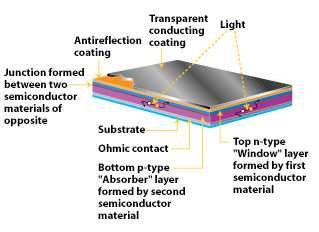Why You Should Only Buy Solar Systems with Locally Based Warranties
Alternative Energy Sources are a Good Idea, but Buy Cautiously
Copyright © Jamie Press; All rights reserved; content may not be copied, rewritten, or republished without author’s written permission. Posted July 14, 2012

Solar power systems allow you to access a source of energy that is, for all practical purposes, never-ending. The sun’s rays are harnessed by large solar panels and converted to a usable form of power.
In some systems, the energy is converted directly to electricity, while in others, it is used to boil or heat water, as it is with active and passive solar water heaters.
An Overview of Solar Power Systems
Concentrated solar power (CSP) systems use mirrors and other devices to turn the widely-dispersed rays of the sun into a small beam. This beam is then used to boil water. The boiling water or steam is then harnessed to drive turbines, heat buildings or produce other beneficial effects.
Photovoltaic systems are a more widely known type of solar power systems. These use solar panels that convert the sun’s rays directly to electricity.
The power can be used on the spot or stored in batteries for convenient and even delivery of energy. Although conventional silicone wafer technology has, perhaps rightfully, gotten a bad rap for large industrial applications, thin film solar panels are looking to revolutionize alternative energy.
The Spread of Solar Energy
Back in 1974, it was estimated that only six homes in the entire United States were completely solar powered. Now, thousands of homes use the sun as their energy source. Not only that, there are many municipal power plants that collect the sun’s rays and more are being built every day.
The largest plant that uses photovoltaic cells is currently Canada’s Sarnia Photovoltaic Power Plant. The largest CSP plant is in India. The nation’s Charanka Solar Park produces 214 megawatts.
Maintenance and Repair of Solar Power Systems
One of the most prominent features of solar power systems is their size. Large solar panels are used for the photovoltaic technology, while CSP systems use reflective panels that aim the light to a collection tower or other device.
For homes, an entire roof can be covered with solar panels to collect enough light to power the whole structure. Even the sides of the home can be wrapped with the thin film panels mentioned above.
Use Local Solar Panel Contractors
Thanks to an unwieldy size and the need for hands-on maintenance, it is important to only buy systems that have locally-based warranties. Imagine trying to pack up a solar panel that’s several feet long and wide — and then sending it to some far-off country like China or India.
If you manage to get the entire thing packed up without damaging it, you’ll be faced with hundreds of dollars’ worth of shipping fees. Also, there is no way to re-install, test, and troubleshoot your panels.
Warranties that are locally-based allow you to use the services of a nearby contractor if something goes wrong. There is no packing or shipping, and the repair company will be able to diagnose and fix the problem right on site. You’ll never regret the cost of a local warranty. The alternative is a costly hassle that may or may not even result in your system being properly fixed.
Articles Others are Reading
- Solar Panel Power Generation
- Ten Top Tips for a Greener Home
- Install a radiant barrier in the Attic
- Eco Camping Tips
Add a Comment:
Website © 2012 Kelly Smith All rights reserved; content may not be copied, rewritten, or republished without author’s written permission; Author’s Google profile